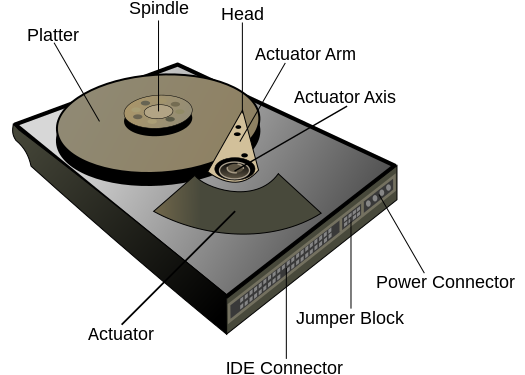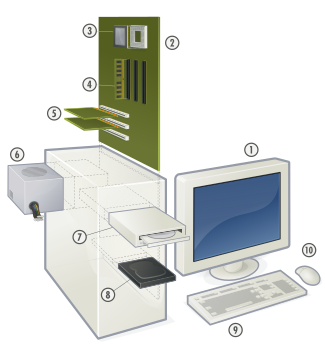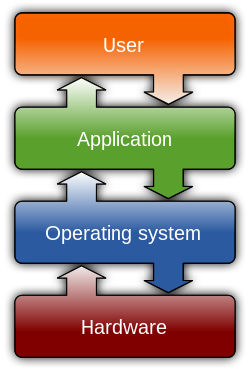 What is hard disk?
What is hard disk? - A hard disk drive (HDD), commonly referred to as a hard drive, hard disk, or fixed disk drive,[1] is a non-volatile storage device which stores digitally encoded data on rapidly rotating platters with magnetic surfaces. Strictly speaking, "drive" refers to a device distinct from its medium, such as a tape drive and its tape, or a floppy disk drive and its floppy disk. Early HDDs had removable media; however, an HDD today is typically a sealed unit (except for a filtered vent hole to equalize air pressure) with fixed media.[2]
- HDDs (introduced in 1956 as data storage for an IBM accounting computer[3]) were originally developed for use with general purpose computers. During the 1990s, the need for large-scale,
 reliable storage, independent of a particular device, led to the introduction of embedded systems such as RAID arrays, network attached storage (NAS) systems and storage area network (SAN) systems that provide efficient and reliable access to large volumes of data. In the 21st century, HDD usage expanded into consumer applications such as camcorders, cellphones, digital audio players, digital video players (e.g. the iPod Classic), digital video recorders, personal digital assistants and video game consoles.
reliable storage, independent of a particular device, led to the introduction of embedded systems such as RAID arrays, network attached storage (NAS) systems and storage area network (SAN) systems that provide efficient and reliable access to large volumes of data. In the 21st century, HDD usage expanded into consumer applications such as camcorders, cellphones, digital audio players, digital video players (e.g. the iPod Classic), digital video recorders, personal digital assistants and video game consoles.
* 1988: Tandon Corporation sold its disk manufacturing division to Western Digital (WDC), which was then a well-known controller designer.[46]
* 1989: Seagate Technology bought Control Data's high-end disk business, as part of CDC's exit from hardware manufacturing.
* 1990: Maxtor buys MiniScribe out of bankruptcy, making it the core of its low-end disk division.
* 1994: Quantum bought DEC's storage division, giving it a high-end disk range to go with its more consumer-oriented ProDrive range, as well as the DLT tape drive range.
* 1995: Conner Peripherals, which was founded by one of Seagate Technology's co-founders along with personnel from MiniScribe, announces a merger with Seagate, which was completed in early 1996.
* 1996: JTS merges with Atari, allowing JTS to bring its disk range into production. Atari was sold to Hasbro in 1998, while JTS itself went bankrupt in 1999.
* 2000: Quantum sells its disk division to Maxtor to concentrate on tape drives and backup equipment.
* 2003: Following the controversy over mass failures of its Deskstar 75GXP range, HDD pioneer IBM sold the majority of its disk division to Hitachi, who renamed it Hitachi Global Storage Technologies (HGST).
* 2003: Western Digital purchased Read-Rite Corp, which makes recording heads used on disk drive platters, for $95.4 million in cash.
* December 21, 2005: Seagate and Maxtor announced an agreement under which Seagate would acquire Maxtor in an all stock transaction valued at $1.9 billion. The acquisition was approved by the appropriate regulatory bodies, and closed on May 19, 2006.
* 2007:July: Western Digital (WDC) acquires Komag U.S.A, a thin-film media manufacturer, for USD 1 Billion
* In the year 2007 516.2 million hard disks were sold
DISCLAIMER:
THIS ALL THE DATA IN FROM WHICH WE FATCH IS ONLY FOR THE LEARNING PURPOSE ONLY AND IT ARE RESPECTIVE RIGHT OF THEIR OWNERS.
HERE PICTURES ARE TAKEN FROM WIKIPEDIA.ORG or any public website.




